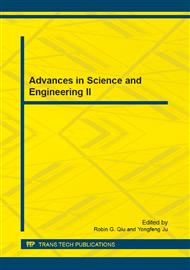p.655
p.660
p.667
p.673
p.678
p.684
p.688
p.694
p.702
Performance Comparison of Neighborhood Based Broadcasting Methods in MANETs
Abstract:
Neighborhood based broadcasting methods for Mobile Ad Hoc Networks (MANETs) is a kind of simple and efficient broadcasting methods. Many neighborhood based broadcasting methods have been proposed in recent years, but there has been no comparison. How to select an appropriate broadcasting method is still a problem. The performances of three typical neighborhood based broadcasting methods (Flooding with Self Pruning, Scalable Broadcasting Approach and Ad Hoc Broadcast Protocol) were compared using Qualnet. Various scenarios with different network load and mobility were designed to evaluate these three methods. Delivery rate of packets, the number of rebroadcasting nodes and end-to-end delay were considered as the performance measures. The comparison charts show that Ad Hoc Broadcast Protocol is a good choice for the heavy load MANETs with low mobility, and Scalable Broadcasting Approach is more appropriate to the high mobility MANETs. The results can give a reference for the practical construction of MANETs.
Info:
Periodical:
Pages:
678-683
Citation:
Online since:
October 2011
Authors:
Keywords:
Price:
Сopyright:
© 2012 Trans Tech Publications Ltd. All Rights Reserved
Share:
Citation:


